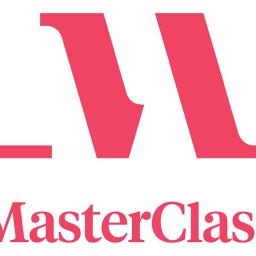 |
by Georgie Peru on (#71ND9)
If you've been waiting for the right moment to try MasterClass, now's a great time to sign up. The online learning platform is offering 50 percent off all annual plans for a limited time with its Black Friday sale. With hundreds of classes across topics like cooking, writing and music, it's one of the best deals we've seen from MasterClass this year. MasterClass has built a reputation as one of the best streaming platforms for learning new skills and creative hobbies. The service features courses led by industry leaders who share practical insights drawn from their own careers. Whether you want to cook with Gordon Ramsay, explore storytelling with Neil Gaiman or study filmmaking with Martin Scorsese, the range of topics is broad enough to appeal to almost any interest. Classes are organized into short, easy-to-follow video lessons, making it simple to fit learning into a busy schedule. Each one comes with supplemental materials like downloadable workbooks, assignments or behind-the-scenes notes that add extra depth. New classes are added regularly, so subscribers have a steady flow of fresh content throughout the year. Subscriptions are structured around annual plans that unlock the full catalog. You can watch classes on most devices, including smartphones, tablets and smart TVs, and your progress syncs across platforms. Offline viewing is supported too, so you can download lessons to study during travel or commutes. Beyond creative skills, MasterClass has expanded into professional growth and wellness topics, with courses covering leadership, communication and mindfulness. It's not just about inspiration; the platform's focus on actionable advice makes it a practical choice for anyone who wants to pick up new skills or refresh existing ones. Normally, annual plans cost anywhere from $120 to $240 per year, so up to a 50-percent discount represents significant savings for new or returning subscribers. If you've been thinking about joining or gifting a membership, this promotion is one of the best times to do it. There are plenty of other Black Friday streaming deals to consider as well. Here are some of the best ones:
|
 Engadget is a web magazine with obsessive daily coverage of everything new in gadgets and consumer electronics
Engadget is a web magazine with obsessive daily coverage of everything new in gadgets and consumer electronics
| Link | https://www.engadget.com/ |
| Feed | https://www.engadget.com/rss.xml |
| Copyright | copyright Yahoo 2025 |
| Updated | 2025-12-25 15:17 |
 |
by Kris Holt on (#70N2N)
Those looking for a better way to keep track of their finances should consider a budgeting app. There are dozens of them on the market now, and one of our favorites is running a discount for new subscribers. Monarch Money is offering 50 percent off annual plans right now when you use the code MONARCHVIP at checkout. With the typical yearly price being $100, this will save you $50. As mentioned before, the discount is only for new users and it can't be combined with other offers. The code only works when you sign up through the web as well. You can't redeem it through the Monarch mobile app. We feel that Monarch has a steeper learning curve than some other budget trackers and that certain aspects of the app are slightly more complex than they probably need to be. But it offers a great deal of customization and granularity, which outweighs our misgivings. On the main dashboard, you'll see your net worth along with your latest transactions, spending versus the previous month, your income so far for the month and details about upcoming bills, your investments and goals you've set. There's also a link to a month-in-review page, which offers an in-depth overview of what's been happening with your money that month. You'll also be able to take a peek at how your net worth has changed over time. Monarch can connect to your bank and track Apple Card, Apple Cash and Savings accounts. It can pull in your transactions and balance history automatically and detect your recurring expenses and income. The app can even keep your car valuation up to date. While it might take a little work to set up Monarch (and you might have to tweak things here and there), it's a detailed budgeting app that can help you keep better track of your income, expenditure and net worth. If you're a former Mint user (RIP), Monarch Money is a great alternative if you haven't yet found a Mint replacement. But it's worth mentioning that our favorite Mint replacement service, Quicken Simplifi, also has a sale going on right now. It's offering 50 percent off when you sign up for an annual subscription, billed at $3 per month with the discount. That comes out to $36 for the first year. This article originally appeared on Engadget at https://www.engadget.com/deals/one-of-our-favorite-budgeting-apps-has-half-off-subscriptions-for-black-friday-174011903.html?src=rss
|
 |
by Amy Skorheim on (#71HDG)
If you're looking for the best Black Friday deal on Anker gear, I'll skip the preamble and just tell you: It's the near-perfect (though uncreatively named) Anker Laptop Power Bank. It's usually $135 but right now it's just $88. It has built-in cables, looks pretty and has a huge capacity and high-wattage rating to charge anything quickly. But if you're in the market for Anker wall charger, wireless charging station or something else the brand makes, read on. This is all stuff we've tested out for our guides or in our lives so we know it to be a great value for what you get - especially now. Here are the best Anker Black Friday deals we could find. Anker Black Friday deals: Power banks Power banks revive dead phones, let you work longer while away from an outlet and allow you to play with your tablet/ereader/gamepad while it charges without being tethered to a wall. After testing out brands from a slew of different makers, our picks just keep coming back to Anker. The mix of value, capacity and clever features make Anker batteries just a little bit better than a lot of the brands out there. Anker's Laptop Power Bank, which our reviewer (me) called the culmination of all the best battery features is going for nearly $50 of right now. If could recommend one purchase to our readers, this would be it. We think Anker's Ultra-Slim MagSafe bank is a better deal than Apple's Air MagSafe battery. It's got a higher capacity and wattage rating and it looks just as sleek. Plus, in my humble opinion, $38 is a way better deal than $99. Anker also makes our top MagSafe battery pick (the MagGo Qi2). Thanks to its clever stand, excellent charging speeds and generous capacity, it's one of the best ways to recharge an iPhone on the go.. I love this shiny little brick. The 3-in-1 portable charger has a built-in cable that's also a strap, plus wall prongs and a handy display. Anker Black Friday deals: Wireless chargers A rats nest of cables on your desk is not the loveliest look. Now that phones, earbuds, smartwatches and even ereaders can refill on a charging coil, wireless chargers are a tidy solution. There are options that'll let you view your phone while it charges, as well as some that will charge three devices at once. We've tested units from dozens of brands for our buying guides and keep putting Anker on our lists of winners. The brand makes some of the top picks in both our wireless charger guide and our list of the best multi-device chargers. Now, thanks to Black Friday, you can keep your devices topped off with quality accessories that are an even better value than usual. Anker Black Friday deals: Power adapters While wireless charging is faster than it's ever been, cords are still the fastest way to charge your phone. Bigger devices like your laptop will reup faster on a high-wattage brick than on a dinky 20-watt adapter and if you want to keep your outlets more streamlined, go for a multi-port power adapter that will let you charge multiple devices at once. Again, after testing many brands, some of our most reliable picks continue to be from Anker. It shows up three times in our guide to the best fast chargers and we recommend the brand in a number of our accessories guides. Now that Black Friday is here, a number of Anker power adapters are on sale - so we rounded them all up here. Anker Black Friday deals: Soundcore audio We mostly think of Anker as a charging accessory brand. But they've expanded their scope by getting into audio equipment - and the effort was a success. You might not immediately pick up that these are Anker speakers - Soundcore shows up on the products themselves, but it's the same company. We recommend a couple Soundcore music makers in our guide to the best Bluetooth speakers. They also make our overall favorite pair of budget earbuds, the Space A40. With Black Friday deals in full effect, these are the best Anker Soundcore deals we could find. Black Friday deals on Ugreen, Biolite, Nimble and more We're fans of plenty of other brands aside from just Anker. Here are some of the other charging accessories that are also on sale for Black Friday. These come from our guide to MagSafe power banks, our standard power bank guide and our best fast charger roundup. If you want to read up on why these guys made the cut, check out those links. But if you just want to snag a few deals on electronics that Engadget has vetted, check out our picks below. More Anker Black Friday deals My personal favorite USB-C charging cable is made by Anker. It's rated at 240 watts, has a durable build, plus it's six-feet long and has a handy right angled connector at one end. Anker of course also makes plenty of other gear, from webcams to mice - that show up in our guides to the best accessories again and again. Here are the best Black Friday deals on Anker gear that doesn't quite fit into the categories above. This article originally appeared on Engadget at https://www.engadget.com/deals/anker-black-friday-deals-save-on-power-banks-wireless-chargers-power-adapters-and-other-accessories-164907229.html?src=rss
|
 |
by Lawrence Bonk on (#71KT5)
Amazon Black Friday deals have brought a slew of discounts to the company's own devices. Aside from Prime Day, Black Friday is the best time to pick up things like Fire TV Sticks, Echo speakers and Kindles. In the latter category, one of the best deals is on the Kindle Colorsoft e-reader: it's been discounted to $170, down from its usual $250 price. The model came out earlier this year and we gave it a glowing review, calling it "the missing link in Amazon's ereader lineup." It's the first Kindle ereader in color, which makes this thing one of the best ways to read comic books and graphic novels. The pinch-to-zoom feature lets you get closer to details, to make each panel really pop. This is also a high-end ereader, color or not. We found the load times to be exceptionally fast and the same goes for turning pages. There's an auto-adjusting front light, which comes in handy. There are also no lock screen ads by default and a single charge lasts eight full weeks of regular use. The major downside here is the price. It's tough to truly recommend any ereader at $250, or the original launch price of $280. It's a lot easier to recommend at $170. Amazon is also selling similar products at a discount, some of which made our list of the best ereaders. The base Kindle is down to $80, which is another record low. The Paperwhite is on sale for $125, yet another record low price. And keeping with the theme, the current-gen Kindle Scribe is on sale for as low as $280, the cheapest we've seen it. This article originally appeared on Engadget at https://www.engadget.com/deals/amazons-kindle-colorsoft-is-32-percent-off-in-this-black-friday-deal-110037414.html?src=rss
|
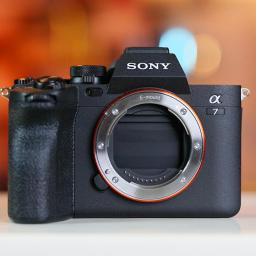 |
by Steve Dent on (#71T4F)
Ready to move up from your smartphone camera? Sony's A7 IV and A7R V cameras are top picks in Engadget's camera buying guide and now they're both now on sale at all-time lows for the holidays. Sony's A7 IV, which I said has "the best combination of image quality, performance and video powers" is on sale for $1,998, or 26 percent off the regular price. And the A7R V, which shoots beautiful 61MP images and offers fast and accurate autofocus, has hit at an all-time low of $3,298 or 21 percent ($898) off. Note that these are both "body only" models - you'll need to seek out lenses for these models, too. (Welcome to the world of real photography.) With a superb score of 90 in my review, Sony's A7 IV is still one of the best hybrid cameras you can get thanks to the high resolution, fast shooting speeds and 4K 60p video. Autofocus is incredible for both video and stills, and it comes with in-body stabilization to help smooth your shots. And for photographers, image quality has never been better thanks to the high dynamic range and enhanced resolution compared to the previous model. Although it does see occasional discounts, I've never seen it drop below $2,000, so if you've been looking, now is a perfect time to buy. Sony's A7R V garnered a similarly superb Engadget review. With a 61-megapixel sensor, it shoots sharp and beautiful images at a very respectable speed for such a high-resolution model (10 fps). It has equally fast and reliable autofocus, the sharpest viewfinder on the market and in-body stabilization that's much improved over the A7R IV. Video has even improved, with 8K and 10-bit options now on tap. Again, there's never been a better time to buy one, as Sony told me this is the lowest price it has ever been sold at. This article originally appeared on Engadget at https://www.engadget.com/deals/sonys-a7r-iv-and-a7r-v-cameras-are-on-sale-for-all-time-low-prices-for-black-friday-132107036.html?src=rss
|
 |
by Steve Dent on (#71PFA)
Black Friday deals have discounted the DJI Osmo Pocket 3 by a ton. The vlogging camera is down to $510 right now, which is 36 percent off its usual price. While that's off the earlier low of $502, it's probably the best deal you'll find on the Pocket 3 for some time, considering US tariffs recently forced DJI to jack up prices. When DJI's Osmo Pocket 3 came out I said it was maybe the only vlogging camera you need." To start with, it has a big one-inch sensor that boosts image quality considerably, particularly in low light. You also get a large swiveling touchscreen that makes it easier to switch between horizontal and vertical video. What really makes it great for vlogging, though, are the follow modes combined with face tracking. When working solo, you can simply set it up and it'll rotate and tilt to follow you around - so you don't have to worry about focus or even pointing the camera at yourself. While there's very little not to like about the Osmo Pocket 3, it's not ideal for photos and is also quite expensive. But with the Black Friday deal and DJI's Osmo Pocket 4 rumored to be arriving in December, it's a great time to buy one - just act quickly as stocks may run out. There are a ton of other Black Friday camera deals available now, too, so be sure to check those out if you're looking for some new gear.This article originally appeared on Engadget at https://www.engadget.com/cameras/the-dji-osmo-pocket-3-vlogging-camera-is-36-percent-off-for-black-friday-092339986.html?src=rss
|
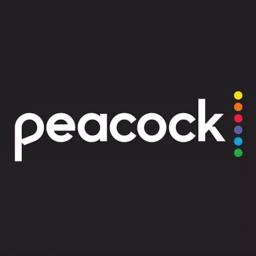 |
by Andre Revilla on (#71C8B)
Walmart is offering its Walmart+ subscription at half off for new sign-ups, and it includes a choice of either Peacock Premium or Paramount+ Essential. The deal for new subscribers is just $49 for the first year, marked down from $98. The real value is in selecting Peacock Premium, which would normally run you $110 per year on its own. With the current discount on a Walmart+ subscription you are essentially getting half off on your streaming subscription for that year. Just about every major streaming service has raised its prices in the last year, including HBO Max, Disney+, Netflix, Apple TV and YouTube TV, so saving some money on one of them just might be worth the effort. Cord cutting is not nearly as affordable as it used to be, so finding a deal like this is pretty helpful. Walmart+ itself offers myriad additional benefits like early access to Black Friday deals, free shipping on orders over $35, discounts on gas, free online veterinary care and more. Earlier this year, Walmart+ subscribers got first dibs on the Nintendo Switch 2 at the retailer. You can also use that free shipping to take advantage of Walmart's drone delivery program in a handful of select cities.This article originally appeared on Engadget at https://www.engadget.com/deals/use-this-hack-to-get-a-year-of-peacock-for-49-before-black-friday-192739009.html?src=rss
|
 |
by Sam Chapman,Valentina Palladino on (#71ABJ)
Were you a Lego-set kid or a giant-bucket-of-Legos kid? I was a sets kid all the way - I loved, and still love, the zen feeling of building something incredible a little bit at a time. Also, every time I tried to build something from the giant bucket, it fell apart immediately, but let's not dwell on that. For this year's Black Friday and Cyber Monday, we're trawling the net for the best Black Friday deals on Lego sets, from family-friendly tie-ins to architectural behemoths. If you've had your eye on a set but demurred due to the price, this list is for you. It's a good idea to use a price tracker to see if you're getting the best Black Friday Lego deals. You'll find Lego bargains this holiday season at retailers like Amazon and Walmart, but don't overlook Lego's own site. If you join the free Lego Insiders program, you'll get special discounts and exclusive member gifts with each purchase, plus points you can redeem for your next set or bucket. You can now officially backorder the hottest Lego gift of the season, the Star Trek USS Enterprise set, which was just announced. With a titanic 3,600 pieces and mini-figures of the whole Next Generation crew (Guinan is a standout), it will be a must-have for any Star Trek fans. The set is available for $400 starting today. Best Lego Black Friday deals LEGO Ideas The Insect Collection 21342 for $40 (50 percent off) LEGO Architecture New York City Model Kit 21028 for $34 (44 percent off) LEGO Harry Potter Mandrake Figure & Pot Plant Toy 76433 for $41 (41 percent off) LEGO Disney Frozen Advent Calendar 2025 43273 for $24 (47 percent off) LEGO Dreamzzz Izzie's Dream Animals Toys 71481 for $24 (40 percent off) LEGO Icons Blacktron Renegade 10355 for $54 (46 percent off) LEGO Friends Space Research Rover 42602 for $33 (34 percent off) LEGO City Yellow Mobile Construction Crane Building Toy 60409 for $77 (30 percent off) LEGO NINJAGO Dragon Stone Shrine 71819 for $79 (34 percent off) LEGO Santa's Sleigh 40499 for $25 (37 percent off) LEGO Disney and Pixar Wall-E and EVE Building Set for Adults for $56 (20 percent off) LEGO Classic Large Creative Brick Box 10698 for $39 (34 percent off) LEGO Architecture Statue of Liberty 21042 for $81 (33 percent off) LEGO Creator 3 in 1 Magical Unicorn Toy 31140 for $7 (32 percent off) LEGO Botanicals Mini Bonsai Trees Building Set 10373 for $45 (31 percent off) LEGO Technic & Speed Champions McLaren Racing Pack for $54 (30 percent off) LEGO Speed Champions Mercedes-AMG G 63 and Mercedes-AMG SL 63 for $25 (44 percent off) LEGO Harry Potter Thestral Family Building Toy 76458 for $49 (30 percent off) LEGO Technic NASA Apollo Lunar Roving Vehicle LRV Building Set 42182 for $154 (30 percent off) LEGO Technic NASA Mars Rover Perseverance Building Toys 42158 for $70 (30 percent off) LEGO Icons Dried Flower Centerpiece 10314 for $35 (30 percent off) LEGO Christmas Table Decoration 40743 for $25 (37 percent off) LEGO Santa's Delivery Truck Building Toy for Kids 40746 for $14 (30 percent off) LEGO City Fire Rescue Plane Toy 60413 for $38 (31 percent off) LEGO Creator 3 in 1 Wild Animals: Majestic Rhino with Birds 31171 for $42 (30 percent off) LEGO Star Wars: A New Hope Boarding the Tantive IV Fantasy Toy 75387 for $38 (30 percent off) LEGO City Yellow Delivery Truck Toy 60440 for $70 (30 percent off) LEGO Speed Champions 2 Fast 2 Furious Nissan Skyline GT-R (R34) Race Car 76917 for $17 (30 percent off) LEGO Star Wars Millenium Falcon A New Hope 25th Anniversary Collectible Model for $68 (20 percent off) LEGO Star Wars Brick-Built Star Wars Logo 75407 for $48 (20 percent off) LEGO Star Wars R2-D2 Building Toy Set 75379 for $80 (20 percent off) LEGO City Donut Truck Toy 60452 for $16 (20 percent off) LEGO Botanicals Happy Plants Building Toys 10349 for $18 (20 percent off) LEGO Botanicals Mini Orchid Building Set 10343 for $24 (20 percent off) LEGO Ideas Tuxedo Cat 21349 for $80 (20 percent off) LEGO Creator 3 in 1 Retro Camera Toy 31147 for $16 (20 percent off) LEGO DC Batman Mech Armor Super Hero Toy 76270 for $12 (20 percent off) LEGO Friends Autumn's Room Building Toy 42646 for $17 (15 percent off) LEGO NINJAGO Arin's Ninja Off-Road Buggy Car Toy for $40 (20 percent off) LEGO Super Mario Captain Toad's Camp Building Toy 72040 for $12 (20 percent off) LEGO Technic Aston Martin Valkyrie Toy Car 42208 for $53 (19 percent off) LEGO Harry Potter Hogwarts Castle and Grounds 76419 for $140 (18 percent off) LEGO Art Hokusai The Great Wave Framed Japanese Wall Art Building Set 31208 for $85 (15 percent off) LEGO Animal Crossing Kapp'n's Island Boat Tour 77048 for $20 (32 percent off) LEGO Animal Crossing Stargazing with Celeste 77053 for $6 (36 percent off) LEGO NINJAGO Cole's Elemental Earth Mech Mini Ninja Toy 71806 for $17 (15 percent off) LEGO Friends Cotton Candy Stand and Scooter 42643 for $8 (15 percent off)This article originally appeared on Engadget at https://www.engadget.com/deals/lego-black-friday-deals-are-here-save-up-to-60-percent-on-star-wars-disney-harry-potter-and-more-during-the-biggest-holiday-sale-155007726.html?src=rss
|
 |
by Sarah Fielding on (#71BE5)
Budgeting can be a stressful, challenging and uncomfortable experience. While it's completely possible to do it on your own, we've become fans of a few great budgeting apps. Take our favorite budgeting app Quicken, which is having a 50 percent off sale for Black Friday. The Quicken Simplifi app is down to $3 monthly from $6 monthly, adding up to $36 for the year. Quicken Classic, the company's "original desktop software" for "experienced investors" is also half off at $6 monthly, down from $12 monthly. The sale starts today and is available until Wednesday, December 3. One of the many things that sets Quicken Simplifi apart from its competitors is its sleek, easy to use interface. The setup is pretty straightforward and it allows for your spouse or financial advisor to act as co-manager of the account. It also clearly shows figures like net worth, recent spending, upcoming recurring payments and more. Plus, there's an option to say if you're expecting a refund. Quicken Simplifi unfortunately doesn't offer a free trial so testing it out with a discount means less money invested if it's not for you.This article originally appeared on Engadget at https://www.engadget.com/deals/our-favorite-budgeting-app-has-50-percent-off-subscriptions-for-black-friday-160025270.html?src=rss
|
 |
by Lawrence Bonk on (#71P4Z)
E Ink tablets are a great purchase for anyone looking to get some distraction-free writing done, and reMarkable is selling some of our favorite models for up to a $70 discount for Black Friday. A bundle comes with an E Ink tablet of your chosing, plus a folio case to cover the screen and a rechargeable Marker stylus. The reMarkable 2 and the reMarkable Paper Pro are available in the deal, and you'll find both on our list of the best E ink tablets. The reMarkable 2 in particular offers a great grayscale reading and writing experience, with support for Google Drive, Microsoft OneDrive and Dropbox. It's easy to use and the screen makes text look crisp. The battery lasts around two weeks, which is one of the benefits of this type of display. It supports Wi-Fi and can integrate both PDFs and ePub files. It's also easy to create your own notebooks that keep track of handwritten notes. To that end, there are eight brush types here to mark up documents and take notes. The only major downside of the reMarkable 2 is that it doesn't ship with the company's newest Marker Plus stylus. However, this sale lessens that concern. A bundle with the tablet, the Marker Plus and the most simple case costs around $458, whereas the tablet by itself typically costs $399. There's a similar discounted bundle available for the Paper Pro tablet. This knocks $50 off the asking price.This article originally appeared on Engadget at https://www.engadget.com/deals/remarkable-e-ink-tablet-bundles-are-up-to-70-off-for-black-friday-125523431.html?src=rss
|
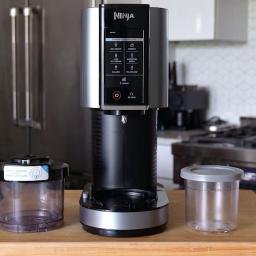 |
by Matt Tate on (#71NYK)
Cold fall weather shouldn't get in the way of you enjoying a nice frozen dessert, and if you purchase our favorite ice cream maker for its discounted price of $180 for Black Friday, you could remove another obstacle between you and fresh ice cream every day. In our review testing, the Ninja Creami wasn't just good for ice cream, but could also make a mean sorbet in a pinch, and if you buy it today, you'll get if for the lowest price we've seen this year - $50 off its regular $230 starting price. While you'll definitely need a bit of space to accommodate it, the Creami is a more compact ice cream machine than some of its rivals. It works similarly to a food processor, only here you'll be using strictly frozen liquid ice cream as a base. Once you have that (you'll need to give the base around 24 hours in the freezer for the desired consistency) you use Ninja's machine to blend in your chosen flavors. And if you make a mess (and let's face it, you probably will), rest assured that most of the components are dishwasher-safe. It's admittedly a fairly loud machine during use, but as long as you're willing to put up with the noise, you can choose between seven one-touch programs, including milkshake if you're in the mood for a cold drink. And if you're hosting people with allergies, they can be reassured that you have total control about what's going into and coming out of the machine, which is much harder to guarantee when you're buying dessert in a restaurant. This model also includes two pint containers with lids. If you want the latest and greatest, though, the Ninja Swirl is the ice-cream maker to get. It can make regular and soft-serve ice cream, plus a number of other frozen treats. Right now, QVC has it for the best price we've seen, from $350 to $280. This article originally appeared on Engadget at https://www.engadget.com/deals/the-ninja-creami-ice-cream-drops-to-180-for-black-friday-133009780.html?src=rss
|
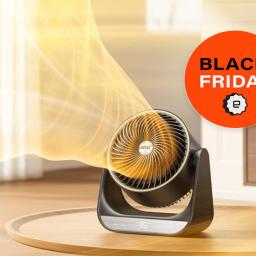 |
by Amy Skorheim on (#71SWH)
As I write this, my Dreo Whole-Room heater is swirling warm air around me in a hushed, mellow sweep. I personally paid the full $100 for the privilege but right now, you can currently snag yours for $15 less, thanks to Black Friday's benevolence. Either way - this little guy is worth it. I bought mine a few weeks ago when the leaves started to turn and I knew winter was coming for my home office. I needed something to replace the aging plug-in radiator I used in years past and, after some research, this seemed like just the thing. There are no heating vents in my office, because it was once the front porch. Whoever built the addition did a solid job - including constructing the walls out of a material (brick? cinder block? titanium?) that no nail can penetrate, let alone duct work. The hand-me-down plug-in radiator I used last year wasn't cutting it - only keeping me warm if I stood bestride it. If I'd had the budget for it, I'd have picked up my editor's most recent heater find, but $100 felt like my limit. I can report that my purchase of Dreo's heater has been worth it. It stands about a foot tall and just about as wide, but it really pumps out the heat. I originally mistook the displayed "H1" for "high," so I thought the heat output was fine, but not great. Then I pushed the plus button and realized there's an H2 and H3, which is where things really get spicy. It can oscillate left and right in a 90-degree arc, as well as nod up and down 60 degrees. It can even do both at the same time. I anthropomorphize everything, so when it swings both horizontally and vertically, I see a baby woodland owl inspecting its forest habitat in awe. Unlike that radiator heater, this heats up nigh-on instantaneously. Within seconds, I can feel the warmth, and within a minute my fingers defrost enough so I can type. But, since it is a ceramic heater, the heat largely disappears when you turn it off (at which point it goes through a 30 second cool-down to push the remaining heat out of the vents). The air in the room will stay as warm as your insulation allows, but I do use the remote to click it on and off throughout the day. The exterior is largely plastic, and I was worried it would have a strong off-gassing smell. Straight out of the box, the chemical tinge was noticeable, but after leaving it sitting out for a couple days, it calmed right down. I haven't put the timer - or the tip-over safety function for that matter - to the test, but I'm happy to know that both are available. And, as advertised, it's super quiet, emitting a pleasant hum that keeps me company as I work. It's also quite portable. Which is why it constantly makes the rounds around my house. My kid likes to have it pointed at him when he eats breakfast before school. My husband grabs it to de-ice the bathroom during a shower. I honestly love that this little heater can help them stay comfortable without having to crank up the central heating to warm up the whole house, but I do wish I didn't have to hunt it down at the start of a workday. I guess should just go ahead and grab another.This article originally appeared on Engadget at https://www.engadget.com/deals/my-family-keeps-stealing-my-dreo-heater-so-im-buying-another-while-its-on-sale-for-black-friday-160923723.html?src=rss
|
 |
by Andre Revilla on (#71KT6)
For anyone looking to get a great deal on a streaming device, Roku's Black Friday deals are here. The Roku Streaming Stick Plus, which just happens to be one of our favorite streaming devices, is 50 percent off, on sale for just $19. The regular Streaming Stick and Streaming Stick 4K are also on sale for 47 percent and 50 percent off, coming in at $15 and $25 respectively. Roku makes some of the best streaming devices you can get, and any of the ones on sale would be great picks to upgrade an old TV you already have. The Streaming Stick Plus is our favorite of the bunch since it supports 4K HDR content and gives you access to a bunch of free content thanks to Roku's streaming OS. We also appreciate its accurate universal search and the fact that it draws power from your TV, so it doesn't need to be plugged into a wall outlet to get power. The standard Streaming Stick is a good alternative to Amazon's most basic Fire TV Stick, and if you already prefer Roku's streaming OS, it's arguably the better choice. The Streaming Stick 4K adds Dolby Vision into the mix, if that's a must-have for you. Also, if you're looking for a more powerful set-top streaming box, the Roku Ultra is 30 percent off, marked down to $69 from $100. This article originally appeared on Engadget at https://www.engadget.com/deals/get-the-roku-streaming-stick-plus-for-only-19-this-black-friday-103023062.html?src=rss
|
 |
by Mariella Moon on (#71SRH)
Two more Apple products, specifically Maps and Ads, could be big enough to be designated as gatekeepers under the European Union's Digital Markets Act (DMA). The EU has announced that it has received notifications from the company that those services meet DMA thresholds. It will now have 45 days to decide whether to designate Apple as a gatekeeper for either of them.Under DMA rules, services that have 45 million monthly active end users and 10,000 yearly business users in the past three financial years can earn the gatekeeper" designation. That means to say, they're considered to have a significant impact on their markets. Apple already has several products with the designation, namely the Safari web browser, the iOS and iPadOS, as well as the App Store. As such, it has to adhere to a strict set of rules for those services and is prohibited from favoring its own products over rivals and from locking users into its ecosystem.Apple has submitted an official rebuttal and will discuss with the EU why Maps and Ads shouldn't be designated, according to Reuters. The company said Maps sees very limited usage in the EU compared to its competitors, such as Google Maps. It also denied the Apple Ads is a major player in the bloc's online advertising industry and said that it has minimal share compared to ad services by Google, Meta, TikTok and even X. We look forward to further explaining to the European Commission why Apple Maps and Apple Ads should not be designated," Apple said in a statement.This article originally appeared on Engadget at https://www.engadget.com/big-tech/the-eu-says-apple-maps-may-be-big-enough-to-be-considered-a-dma-gatekeeper-130000965.html?src=rss
|
 |
by Matt Tate on (#71H4Y)
Sony's still excellent WH-1000XM5 wireless headphones are down to $248 for Black Friday. That's $152 off the list price and equal to the all-time low (give or take a single cent) we saw on Prime Day. They may no longer be Sony's flagship noise-canceling headphones, but if the WH-1000XM6 are out of your price range, these former Engadget favorites are well worth considering at this heavily reduced price. We awarded the WH-1000XM5 a score of 95 in our 2022 review, praising the supremely comfortable redesign, sound quality and powerful ANC. Battery life is also very respectable at 30 hours. We found the punchy bass an improvement over their predecessors, and the overall sound deeper and more immersive than the M4 headphones. As for noise-canceling, Sony's decision to double the number of microphones and processors used for ANC means an improvement in blocking higher frequency sounds, such as human voices. They aren't entirely baby scream-proof, but then few headphones are. Naturally, the WH-1000XM6 that this year replaced the M5 as Sony's flagship model offers even better sound quality and noise cancellation, while remaining extremely comfortable throughout long listening sessions. But they're also a lot more expensive at $450 - they're on sale now for $398 for Black Friday, so you have the option to upgrade to the latest flagship if you're willing to spend a bit more. However, we still think the XM5 deal is the best value for most people here. This article originally appeared on Engadget at https://www.engadget.com/deals/black-friday-deals-include-sonys-wh-1000xm5-headphones-for-an-all-time-low-124434455.html?src=rss
|
 |
by Sarah Fielding on (#717MC)
While there are lots of great Black Friday sales on cheaper devices, it's the big ticket items that really make a world of difference. Take Apple's 2024 Mac mini M4, which has dropped to $479 from $599 as part of early Black Friday deals. The 20 percent discount brings Apple's mini desktop computer with 16GB of RAM and 256GB of SSD to only $10 more than its all-time low. We gave the Mac mini M4 a 90 in our review, in part, because it packs an incredible amount of power into such a small design. It also has front facing USB-C and headphone ports, a first for the Mac mini lineup. Plus, it starts with 16GB of RAM, an upgrade from its predecessors. However, if you want more memory or storage, the other Mac Mini M4 models are also on sale. You can get 16GB of RAM and 512GB of SSD for $719, down from $799. Then there's the option for 24GB of RAM and 512GB of SSD at $889, down from $999. Plus, if you want to bundle in three years of AppleCare+, each model ends up being about $100 cheaper than normal. If you're looking to build a desktop setup from scratch, there's a small but notable discount on Apple's Magic Trackpad as well. It's down to $120, which is only seven percent off its usual price but it's the cheapest we've seen it. This article originally appeared on Engadget at https://www.engadget.com/deals/apples-mac-mini-m4-drops-to-479-for-black-friday-150749921.html?src=rss
|
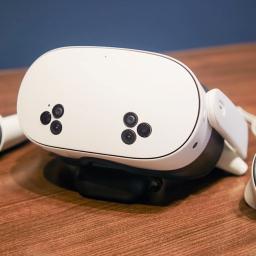 |
by Cheyenne MacDonald on (#71GQP)
Black Friday deals have come for VR headsets, and you can pick up our favorite budget set for less than usual. Meta's entry-level Quest 3S is 17 percent off and down to $250 for the 128GB version right now. Its normal price is $300, and with this version you get the game Gorilla Tag for free. The Meta Quest 3S is an impressive VR headset for the price, and scored a 90 in Engadget's review, landing it among our picks for the best VR headsets around right now. It's comfortable to wear, gets over two hours of battery life before needing to be recharged and offers a 96-degree field of view. While its 1,830 by 1,920 pixel per eye screen doesn't quite achieve the sharpness of the Quest 3, it does have the same chip - the Qualcomm Snapdragon XR2 Gen 2 - as the pricier model, making for fast performance. It also comes with 8GB of RAM. The Quest 3S also comes with the Touch Plus controllers, which have button and joystick controls as well as motion controls. It can also connect to gaming PCs and stream gameplay to Chromecast and AirPlay devices. Despite being relatively inexpensive, the 3S offers a great experience. In his review, Engadget's Devindra Hardawar said the 3S is "the best $300 standalone VR headset we've ever seen."This article originally appeared on Engadget at https://www.engadget.com/deals/the-meta-quest-3s-vr-headset-drops-to-a-record-low-this-black-friday-180911450.html?src=rss
|
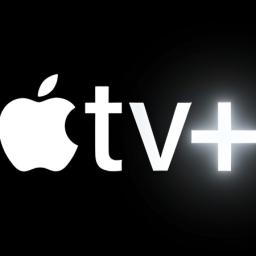 |
by Georgie Peru on (#71N38)
If you've been waiting to try Apple TV+, now's the time to jump in. You can get six months of access for only $36 for Black Friday, giving you a chance to stream award-winning originals like Severance, Ted Lasso and The Morning Show. The offer is live for a limited time through December 1, so if you haven't signed up before, it's a great time to see what the service has to offer. The biggest caveat to the deal is that you must subscribe directly through Apple and not through a third-party service. Apple TV+ continues to build one of the strongest lineups in streaming. Its library includes standout originals like Ted Lasso, Severance, Slow Horses, For All Mankind, Foundation and Silo, along with newer releases such as The Studio and Dope Thief. On the film side, you'll find the 2022 Best Picture winner CODA, plus Killers of the Flower Moon, Blitz and Tetris. Apple's streaming service has earned plenty of recognition since launch. Apple TV+ shows picked up 10 Emmy Awards in 2024, including a win for Slow Horses for outstanding writing in a drama series. Apple TV+ also offers a polished streaming experience. All content is ad-free and available in up to 4K HDR, with Dolby Vision and Dolby Atmos support where available. The app works on nearly every device, from iPhone and iPad to smart TVs, PlayStation, Xbox and Roku. You can also download episodes and movies to watch offline, which is handy for travel or long commutes. If you're already invested in Apple's ecosystem, the integration is seamless. You can share your subscription with up to five other people through Family Sharing, and playback syncs across devices so you can start a show on your iPhone and finish it on your TV. Apple TV+ is also part of the Apple One bundle if you prefer to manage multiple Apple services under a single plan. This deal is available to new and qualified returning subscribers, meaning those who haven't had an active subscription in the past 30 days. You'll need to sign up directly through Apple rather than a third-party service or carrier. Once the three-month period ends, the plan renews at the standard $13 per month, so be sure to cancel before the renewal date if you don't want to continue. With a growing slate of original series, award-winning films and a slick interface, Apple TV+ has turned into one of the best streaming services for premium content. And with this limited-time deal, you can catch up on its biggest hits without paying full price. There are plenty of other Black Friday streaming deals to consider as well. Here are some of the best ones:
|
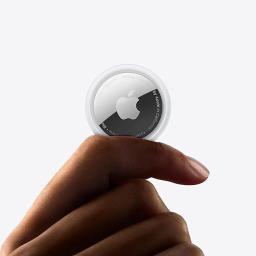 |
by Matt Tate on (#71FM6)
Good deals on Apple products are generally harder to come by throughout the year than with other brands, but sale events are usually the best time to look around. And sure enough, for Black Friday, Apple's AirTags are cheaper than ever. You can pick up a four-pack of these handy Bluetooth trackers for $63, a record low price, at Amazon and Walmart. Bear in mind that this deal brings the price per AirTag down to about $16 if you were to buy them individually, and when not on sale they usually cost $29. If you use Apple devices and are prone to losing stuff, AirTags are the obvious choice of Bluetooth tracker to buy. Adding one to your account requires little more than a single tap, and with Apple's Find My network offering such extensive coverage these days, it's never been easier to find missing belongings. Tracking down a still nearby misplaced item is as easy as using your iPhone to trigger a sound from the AirTag's built-in speaker, or alternatively you can use Precision Finding to pinpoint its location through Find My. You just follow the instructions on your iPhone's screen, paying attention to its vibrations as you get closer. If you only need a single AirTag, they're also on sale right now for $18, another record low. It works out a bit better as a deal if you purchase the four-pack, but if you just want to attach one to your keys or backpack, $65 might seem like a stretch. Just remember that AirTags can't be attached to items right out of the box. You'll need to add an accessory in order to turn one into a keyring, or even attach it to your pet's collar. This article originally appeared on Engadget at https://www.engadget.com/deals/apple-black-friday-deals-get-a-four-pack-of-airtags-for-a-record-low-price-161756513.html?src=rss
|
 |
by Lawrence Bonk on (#71KR7)
One of the best Black Friday deals under $50 is on the Amazon Smart Plug this year. You can pick up the IoT device for only $12 right now, which is nearly 50 percent off its normal price. If you've been interested in making your house smart, or adding to your existing smart home ecosystem, now is the time to stock up. To that end, this product made our list of the best smart plugs. It's the perfect accessory for those who rely on Alexa to control aspects of the smart home. These plugs are really easy to set up via the Alexa app. You don't have to pop in a Wi-Fi password or anything. It's basically plug-and-play. Once connected, you'll be able to use any device with Alexa to control whatever it's plugged into. For instance, you can group multiple plugs together as lights and then just say "Alexa, turn all the lights off" and it'll do just that. They are compatible with just about any household device with a physical on/off switch, including lamps and coffee makers. While these are the perfect smart plugs for Alexa households, they are only for Alexa households. The plugs don't integrate with any other digital assistant. They are still the best choice for those tied into the ecosystem. Other smart plugs on sale for Black Friday include the Kasa Mini smart plugs; you can get a four-pack for $24. This article originally appeared on Engadget at https://www.engadget.com/deals/the-amazon-smart-plug-is-48-percent-off-for-black-friday-093033189.html?src=rss
|
 |
by Valentina Palladino on (#71FM5)
If you, like me a few months ago, didn't know fabric shavers existed, I'm willing to bet you're not alone. Not too long ago, I went looking for something, anything, that could help get rid of the pilling on some of my most loved pieces of clothing. I stumbled upon the Philips Fabric Shaver in my search and was pleasantly surprised to learn such a device existed - and in such a cute, compact form. I decided to give it a shot and now it's an essential piece of tech in my house. Thanks to Black Friday deals, you don't have to pay as much as I did for it now that it's on sale for only $13. Sure, it may not seem revolutionary - especially if you already knew of the wonders of such devices - but it was for me. I have a lot of T-shirts, joggers, sweaters and more that I've had for at least three years and wear regularly. We also have a bunch of throw blankets around the house, partially because I love a good throw, and partially because my cat demands soft spots on which to sleep. All of those well-worn, well-loved fabrics have pilled over time, and I was tired of picking at the pills myself. This Philips Fabric Shaver makes it so I never have to do that anymore. It runs on two AA batteries, has a simple on-off switch and a shaving head with three sized holes that, as you glide it over your sweater or blanket, catches the pills and shaves them right off. It's literally as simple as that; after I tried it the first time on a pair of joggers, I spent far too much time running around my house and through my closet de-pilling as many things as I could. All the little fabric bits collect in a removable chamber that you simply empty as often as you need into the trash. If you're like me and try to make the most of the wardrobe you have and not buy new clothing all the time, this little gadget will keep the pieces in your closet looking fresh.This article originally appeared on Engadget at https://www.engadget.com/deals/you-need-a-fabric-shaver--this-one-i-use-is-down-to-13-for-black-friday-163402337.html?src=rss
|
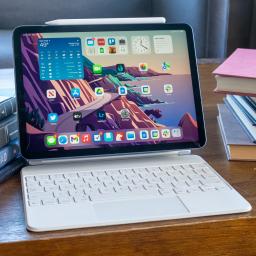 |
by Jeff Dunn on (#66CW9)
Figuring out the best iPad for you can be a little tricky. Apple now sells three different 11-inch tablets and two 13-inch models, each with key differences in pricing, specs and accessory support. The iPad mini is still doing its thing as well. To help you out, we've tested every iPad in Apple's current lineup and broken down which ones best fit certain needs, whether you want a laptop replacement or just a big screen for streaming TV. Table of contents
|
 |
by Valentina Palladino on (#71PRS)
With the launch of the new AirPods Pro 3, Apple made the biggest update to its flagship earbuds in years. But before then, the AirPods Pro 2 were our top picks for the best wireless earbuds for Apple users. They remain a great option today (particularly thanks to software updates), but they can be a bit hard to find. This is where Walmart Black Friday deals come into play right now. Walmart has the AirPods Pro 2 for $139, which is the lowest we've ever seen them and more than $100 off their standard $249 price tag. During Black Friday last year, they dropped to around $155. At this price, the AirPods Pro 2 are a good option for anyone who wants most of the conveniences and features of the Pro 3s without spending nearly $100 more. They have excellent active noise cancellation and great sound quality, and thanks to a firmware update, they do support Apple's new Live Translation feature. Using the buds in tandem with the Translate app on iPhones running iOS 26 or later, you can translate foreign languages in conversation in real time, hearing other languages being spoken to you in your preferred language. Sound quality remains great on the Pro 2 and battery life hits at around six hours of use on a single charge with ANC enabled. The wireless charging case that comes with the Pro 2 actually offers more total hours of listening time than the Pro 3 - 30 hours in total, in comparison to the Pro 3's 24 hours. You also get most of Apple's health tracking capabilities along with all the conveniences of the H2 chipset, which includes quick pairing and switching, plus hands-free Siri. What you won't get here is built-in heart rate tracking and improved sound quality and ANC, all of which are stand-out features of the new Pro 3. In addition to the AirPods Pro 2, other AirPods are on sale for Black Friday. AirPods 4, both with and without ANC, are down to record-low or near-record low prices. Plus, the new AirPods Pro 3 are on sale for their best price since their launch in September. We'll update this post as more Walmart Black Friday tech deals come in. This article originally appeared on Engadget at https://www.engadget.com/deals/walmart-black-friday-deals-the-airpods-pro-2-are-down-to-their-lowest-price-yet-170032199.html?src=rss
|
 |
by Georgie Peru on (#719HJ)
Meditation app Headspace is bringing back one of its biggest annual deals this Black Friday. Through December 4, you'll be able to get 50 percent off the regular annual subscription price, bringing a full year of guided meditations, sleep sounds and mindfulness tools down to $35 per year. If you've been looking to build a better daily routine, this discount makes it easier to start. Headspace has become one of the most recognizable names in digital mindfulness. The app blends practical meditation guidance with structured courses and calming soundscapes designed to make everyday stress easier to manage. Its programs cover everything from beginner-friendly introductions to mindfulness to focused content on topics like anxiety, productivity and sleep. Subscribers get access to hundreds of guided sessions led by the Headspace team, including short daily practices that can be completed in a few spare minutes, plus longer courses that help build consistency. The app's Sleepcasts and soundscapes are unique, designed to create a steady nighttime routine that promotes better rest. For mornings, there are breathing exercises and motivational mini-sessions that can help set focus for the day ahead. Headspace also includes personalized progress tracking, mood check-ins and optional reminders that make it easier to stay consistent with your new mindfulness habits. For anyone new to meditation, the app's clear structure is a major strength. You don't have to know where to start, since it suggests sessions based on your goals or current mood. This annual deal is ideal for users who want to stick with mindfulness practice over time, or anyone interested in incorporating a new habit into their lives. Paying for the year upfront typically saves money compared with the monthly plan, and the discount brings that cost down even further. Whether you're learning the basics of meditation or refining an existing routine, the full library provides enough variety to keep things engaging throughout the year. If you're still comparing wellness apps, check out our guide to the best meditation apps to see how Headspace stacks up against other options. But for those ready to commit to a calmer routine, this annual offer is one of the simplest ways to start the habit at a lower cost.This article originally appeared on Engadget at https://www.engadget.com/deals/the-headspace-black-friday-deal-gives-you-one-year-of-access-for-35-163051909.html?src=rss
|
 |
by Engadget on (#71S87)
The food coma may be strong right now, but it's wise to check out the internet for the best Thanksgiving Black Friday deals you can get this year. With Black Friday no longer being a one-day affair, that means you can find excellent discounts online even on Thanksgiving when all brick-and-mortar locations are closed. It's also wise to shop early for anything you think might sell out - that category typically includes a lot of tech, like AirPods, game consoles, new video games and more. Check out our curated list of the best Thanksgiving deals you can get right now below. Best Thanksgiving Black Friday deals Apple AirPods Pro 3 for $220 ($29 off): Apple's latest flagship wireless earbuds are the ones to get if you have an iPhone and any other Apple gear. They have improved sound quality, impressive ANC improvements, extra features like Live Translation and even better battery life. Most other AirPods are also on sale, including the AirPods 4 and AirPods Max. Read more: The best Apple Black Friday deals on iPads, AirPods, Apple Watches and more iPad A16 for $274 (21 percent off): The entry level iPad doesn't support Apple Intelligence, but that didn't bother us when we reviewed the new slate. We found the speed to be plenty for what most people need an iPad for: casual gaming, streaming, browsing, answering some emails. We wish the display was laminated and had some anti-glare coating. But this is the lowest-priced way to get your hands on a current-model iPad. Also at Walmart, Target and Best Buy. Disney+ Hulu bundle - $60 for one year: The Disney+ and Hulu (with ads) bundle is on sale for $5 per month for one year (for a total of $60) through December 1. New and eligible returning subscribers can take advantage of this deal, and considering the bundle typically costs $13 per month, this deal represents more than a 50 percent discount on the standard monthly price. Read more: The best Black Friday streaming deals: Save on Disney+, Hulu, HBO Max and more Apple TV+ - 6 months for $36: Apple TV+ is offering six months of access for only $36 for Black Friday, which comes out to a discounted price of $6 per month for the six-month period. The deal is live now for new and eligible returning subscribers and runs through December 1, giving you a chance to stream shows like Silo, The Morning Show and For All Mankind for less. The biggest caveat to the deal is that you must subscribe directly through Apple and not through a third-party service. PlayStation 5 Digital Edition for $399 ($100 off): The PlayStation 5 is getting a major Black Friday discount, with $100 off consoles. That brings the PS5 Digital Edition down to $399, the standard PS5 to $449 and the new PS5 Pro to $649. If you've been holding out for the right time to upgrade or buy your first console, these are the deals to beat. You'll find them direct at Sony and from other retailers including Amazon and Walmart. Nintendo Switch 2 + Mario Kart World bundle for $499: Black Friday Nintendo sales were announced and, unsurprisingly, there aren't many true deals out there this year. There are no straight discounts on the Switch 2 console, so your best bet is to pick up a bundle that saves you some cash on a Switch 2 game. One of the best is the Mario Kart Wold bundle, but Pokemon fans should consider the Pokemon Legends: Z-A bundle, too. Also available at Walmart. Amazon Smart Plug for $13 (48 percent off): Those who use Alexa often will get the most out of this smart plug. We like that it's super simple to set up and can turn almost anything with an on-off switch "smart," allowing you to control it via your phone or with Alexa voice commands. Read more: The best Black Friday deals for $50 or less Philips fabric shaver for $13 (32 percent off): Consider this the Black Friday tech deal you didn't know you needed. If you have shirts, sweaters, pants, even blankets that have pilled over time, this handy little fabric shaver can get them looking more like new again. I bought this on a whim after wishing I could refresh some of my most-loved wardrobe staples without spending hours pulling pills off myself. Philips' fabric shaver has delivered and then some, and my clothes look much fresher than before. Meta Quest 3S VR headset for $250 ($50 off): We consider this to be the best VR headset for newbies or those on a budget. It's comfortable to wear for long sessions, has solid performance, comes with excellent controllers and you'll have access to a large app library with it. Sony WH-1000XM5 headphones for $248 ($158 off): While the new XM6 headphones have replaced these as Sony's flagship cans, that doesn't mean the XM5 aren't worth buying. They were our top pick for the best wireless headphones for years before the XM6 came around, and they still have excellent ANC, great sound quality, long battery life, a comfortable fit and handy extra features like multipoint connectivity. LEGO Star Wars Millennium Falcon A New Hope 25th Anniversary Collectable 75375 for $68 (20 percent off): This is a set that any Star Wars fan will love to build and then love to display once it's complete. The 921-piece set features a fully-detailed Millennium Falcone, buildable stand and nameplate. Read more: The best Lego Black Friday deals for 2025 Anker Laptop Power Bank (25K, 100W) for $88 (35 percent off): A top pick in our guide to the best power banks, this Anker brick is kind of a one-and-done device. It has enough capacity to charge all sorts of devices from smartphones to laptops to handheld gaming consoles, and it has two built-in USB-C cables so you don't even have to remember to bring your own to use it. Also available at Anker. Read more: The best Anker Black Friday deals on power banks and other charging gearThis article originally appeared on Engadget at https://www.engadget.com/deals/the-best-thanksgiving-black-friday-deals-for-2025-save-on-airpods-ps5-consoles-disney-and-more-090905438.html?src=rss
|
 |
by Igor Bonifacic on (#71SFC)
If you were hoping to create some silly images this long holiday weekend with Google's new Nano Banana Pro model, I have some bad news: the company is restricting free usage of the AI system. In a support document spotted by 9to5Google, Google notes free users can currently generate two images daily, down from three per day previously. "Image generation and editing is in high demand," the company writes. "Limits may change frequently and will reset daily."It would appear Google is also limiting free Gemini 3 Pro usage, with the document stating non-paying users will get basic access - daily limits may change frequently" as well. When the company first began rolling out Gemini 3 Pro on November 18, it guaranteed five free prompts per day. That was in line with Gemini 2.5 Pro. If you pay for either Google AI Pro or AI Ultra plan, your usage limits have not changed. They remain at 100 and 500 prompts per day, respectively.Google isn't the first company to enforce stricter usage following a popular release. You may recall OpenAI delayed rolling out ChatGPT's built-in image generator to free users after the feature turned out to be more popular than anticipated. However, OpenAI eventually brought image generation to free users.This article originally appeared on Engadget at https://www.engadget.com/ai/google-limits-free-nano-banana-pro-image-generation-usage-due-to-high-demand-223442929.html?src=rss
|
by Kris Holt on (#71SDW)
While generative AI systems cannot be considered inventors under US patent laws, the US Patent and Trademark Office has updated its guidelines on how they can be used in the process of creating innovations. The agency's director, John Squires, said in a notice obtained by Reuters that the USPTO deems genAI to be "analogous" to other tools that inventors might use in their process, including lab equipment, software and research databases."AI systems, including generative AI and other computational models, are instruments used by human inventors," Squires wrote. "They may provide services and generate ideas, but they remain tools used by the human inventor who conceived the claimed invention."The notice [PDF], which is set to be published in the Federal Register on November 28, notes that there's no separate process for evaluating whether an AI-assisted invention qualifies for a patent. "When multiple natural persons are involved in creating an invention with AI assistance, the traditional joint inventorship principles apply," Squires added.The Court of Appeals for the Federal Circuit has ruled that "AI cannot be named as an inventor on a patent application (or issued patent) and that only natural persons can be inventors." There's no change to that stance under the latest USPTO guidelines. But the updated rules do offer more clarity as to whether things like new medications that are developed with the help of genAI systems can be patented.This article originally appeared on Engadget at https://www.engadget.com/ai/us-patent-office-says-generative-ai-is-equivalent-to-other-tools-in-inventors-belts-211700837.html?src=rss
 |
by Danica Creahan on (#71SCB)
This Black Friday will feature an NFC showdown between the Chicago Bears and the Philadelphia Eagles. Both teams are 8-3 this season, but the odds for the Black Friday NFL game favor the Eagles to win. The Chicago Bears vs. Philadelphia Eagles game will stream live nationally on Amazon Prime Video on Friday at 3 p.m. ET. Keep reading to find out what you need to know about Friday's game and the rest of the Week 13 schedule. How to watch the Chicago Bears vs. Philadelphia Eagles game: Date: Friday, Nov. 28, 2025 Kickoff time: 3 p.m. ET/12 p.m. PT Game: Chicago Bears vs. Philadelphia Eagles Location: Lincoln Financial Field, Philadelphia Streaming: Prime Video Chicago Bears vs. Philadelphia Eagles game channel: The Bears visit the Eagles on Friday afternoon for a post-Thanksgiving game, streaming on Amazon's Prime Video. How to watch the Bears vs. Eagles NFL Week 13 schedule: All times Eastern. Thursday, Nov. 27, 2025
|
 |
by Kris Holt on (#71SA0)
If you have a Pixel 10 phone that you use for turn-by-turn directions in lieu of a dedicated GPS device, Google has an update that might be right up your alley. A Google Maps power-saving mode is now available for Pixel 10, Pixel 10 Pro, Pixel 10 Pro XL and Pixel 10 Pro Fold. The company announced this feature earlier this month as part of its November 2025 Pixel Drop.Power-saving mode is only available in portrait orientation and it works on your lock screen. If you tap the power button while using the driving navigation tool, the app will switch to a simpler monochrome look that retains the map layer, as 9to5Google notes. It looks a bit like the dark mode map in the Uber app.You'll see only see key details your journey, such as your next turn and expected travel time. Other elements, such as your current speed, are stripped out. You can still swipe down to see your notifications.If you press the power button or tap the screen, Google Maps will revert to the standard view. The app also turns off power-saving mode when you get to your destination.Google says that the power-saving mode can extend your Pixel 10's battery life by up to four hours, so this could come in handy for long drives when you don't have an easy way to charge your phone while you have it mounted on your dashboard. The more streamlined look could perhaps help to mitigate distracted driving too.Google will probably bring the feature to other devices down the line, but it's disappointing that the company is limiting it to the Pixel 10 lineup for now. Perhaps it will end up offering this stripped-down UI on the Android Auto version of Google Maps someday. tooIt seems that Google is enabling power-saving mode by default via an update on its end. If you'd rather not be able to use the feature, you can switch it off by going to the settings in the app, then Navigation > Driving options and tapping the toggle for power-saving mode.This article originally appeared on Engadget at https://www.engadget.com/apps/a-google-maps-power-saving-mode-lands-on-pixel-10-devices-180000601.html?src=rss
|
 |
by Kris Holt on (#71S86)
Here's some bad news for folks who've been using Plex to stream stuff from a buddy's personal media server to their TV for free for years. As it pledged to do earlier this year when it bumped up the price of the Plex Pass, the service is starting to enforce a paywall for remote streaming from a personal server to TV apps. Plex is rolling out the change on its Roku app this week, followed by its other TV apps (on the likes of Fire TV, Apple TV and Android TV) and third-party clients that use its remote streaming API in 2026. Plex also recently started deploying a redesigned version of its app on Roku-powered TVs.Under the new way of things, the owner of a media server needs a Plex Pass subscription to grant other people remote access to it through the service. A Plex Pass now costs $7 per month, $70 per year or $250 for a lifetime membership. Those with such a subscription (or the Remote Watch Pass for $2 per month or $20 per year) can remotely access someone else's media server, even if the server owner doesn't have Plex Pass. Plex started enforcing the change on mobile devices before doing so elsewhere.It always stinks when a company puts up a paywall around a feature that was previously free. Plex needs to make money to keep things running, which is fair enough. But turning free features into paid ones is hardly a consumer-friendly approach, especially when there are open-source alternatives like Jellyfin around.
|
 |
by Lawrence Bonk on (#71JZH)
Amazon is selling the Echo Spot smart speaker for just $50 as part of a Black Friday promotion. The sale applies to multiple colorways and represents a discount of $30. This isn't a record low price, but it's extremely close. For the uninitiated, the Echo Spot is a diminutive little speaker/alarm clock hybrid unit. It's a cute little doodad and looks great on a nightstand. The screen is customizable, so it doesn't have to display a clock. It can show song titles, smart home control dashboards, the weather and a lot more. Of course, there are numerous clock faces to choose from. The Spot not only integrates with Amazon's smart assistant Alexa, but it provides access to the newfangled Alexa+. This is a smarter and more conversational version of the iconic smart assistant. Like most modern AI products, it's still working out some bugs. The underlying tech, however, is promising. The speaker is decent enough for the size, though you won't be using it to fuel any house parties. It's a great tool for bedroom-based listening. This version doesn't have a camera, which is actually great news for the privacy conscious. In addition to the Echo Spot, you'll even find Black Friday deals on some of the latest Echo devices that just came out last month. The Echo Dot Max is on sale for $90, the new Echo Studio has dropped to $190 and the latest Echo Show 8 has been discounted to $160. This article originally appeared on Engadget at https://www.engadget.com/deals/amazon-black-friday-deals-pick-up-the-echo-spot-smart-alarm-clock-for-only-50-130550824.html?src=rss
|
 |
by Anna Washenko on (#71MSH)
Whether you need a new pair of headphones for yourself or as a gift this holiday season, Black Friday deals should save you some cash. Cans from a bunch of brands are on sale now, including Beats. One of the best deals from that brand is on the Beats Studio Pro, which is available for a whopping 51 percent off. Grab a pair while they're down to $170; this matches the cost we've seen for the Studio Pro headphones during other peak shopping times earlier this year. The Beats brand last updated this wireless over-ear headset in 2023, but it's still a solid choice for a workhorse pair of headphones. The current model improved audio quality and added a useful Transparency mode, so that you can listen to your tunes and still be aware of the world around you, which is great for settings such as public transit and the gym. The other option is a more immersive active noise-canceling mode. Beats Studio Pro also support lossless audio when wired on a USB-C cable. The official specs say the battery life for the headphones lasts up to 40 hours, or 24 hours when the active noise canceling mode is engaged. If you need to eke more life out of these Beats, they do offer a fast-charging mode that promises four hours of activity from just ten minutes of recharge. There are several color options for the Beats Studio Pro, so if there's a particular hue you want to be sporting, this might be a deal to hop on quickly before the supplies run out or the deal expires. Also on sale in the Beats realm for Black Friday is the Beats Solo 4, which is 35 percent off and down to $130. This article originally appeared on Engadget at https://www.engadget.com/audio/headphones/the-beats-studio-pro-headphones-are-more-than-half-off-for-black-friday-140335170.html?src=rss
|
 |
by Sarah Fielding on (#71CV7)
The holiday season is just about here and it's officially the time of year to ask: What presents am I going to get everyone? Thankfully, there are a ton of early Black Friday deals for the tech lover in your life. Take the 43 percent discount currently available on the 8Bitdo Ultimate Bluetooth Controller and Charging Dock. It's a great option for the gamer in your life, and a steal down from $70 to $40 - a new all-time low price. The controller comes with perks such as the charging dock, 22 hours of battery per charge and compatibility with everything from Steam Deck to Switch. The deal is only for the white model. Earlier this year, 8Bitdo released a new version of this $70 controller, aptly called the Ultimate 2 Bluetooth. We rated it as one of the best controllers for the Nintendo Switch 2. While the upgraded model brings you features like more precise and sensitive joysticks, this sale brings the original Ultimate Controller back into view - and our shopping carts. Plus, it also works well with the Nintendo Switch 2.This article originally appeared on Engadget at https://www.engadget.com/deals/the-8bitdo-ultimate-controller-drops-to-40-for-black-friday-133023380.html?src=rss
|
 |
by Ian Carlos Campbell on (#71EWZ)
Robot vacuums can be a huge help, keeping your floors clean regularly without much extra work on your part. Black Friday deals often include some of our favorite robovacs, and this year is shaping up to be no different. iRobot's entry-level Roomba 104 Vac robot vacuum is available for 48 percent off right now, bringing it down to a record low of $130. A number of other Roombas are on sale for Black Friday, too. In iRobot's lineup of robot vacuums, the Roomba 104 sits on the low end, adept at vacuuming up dust and hair, but without the mopping ability of its more expensive Max, Plus or Combo counterparts. The Roomba 104 Vac makes for a great first robot vacuum all the same, though, because of its four levels of powerful suction, and easy-to-use app. Like iRobot's other vacuums, the Roomba 104 maps and navigates your home with LiDAR, which helps it avoid obstacles. And using the Roomba Home app, you can schedule it to clean specific rooms, and even spot-clean particularly dirty spots. An earlier version of the Roomba Vac is Engadget's favorite budget robot vacuum, and you'll get the same great performance out of the newer Roomba 104 Vac. That includes a specialized brush for cleaning the hard-to-reach corners of your home, and also a charging dock that the vacuum can automatically return to once it's down charging. This sale on Roomba vacuums comes at an admittedly difficult time for iRobot at large, with the company dealing with a serious financial shortfall as of its last earning statement. Regardless of what happens to iRobot, though, the Roomba 104 Vac's offline mode should mean that it can clean your home and charge itself without the need of an app or an internet connection.This article originally appeared on Engadget at https://www.engadget.com/home/smart-home/black-friday-deals-include-this-roomba-robot-vacuum-for-only-130-191506142.html?src=rss
|
 |
by Lawrence Bonk on (#718FM)
EcoFlow is hosting a Black Friday sale on portable power stations. This drops prices by up to 42 percent on many of its well-regarded products. For instance, the Delta Pro 3 is on sale for $2,099. This is a discount of 43 percent, as the typical cost is $3,699. That's a significant drop in price. Amazon's matching the sale price as well. The Delta Pro 3 topped Yahoo's list of the best portable power stations, and for very good reason. This thing is a beast. It boasts a 4,096Wh capacity, so it can power an average 500-watt refrigerator for over 24 hours. That's with continuous use. It can be stretched out to two or three days by only running the appliance during daylight hours. There's even a discounted bundle that includes an extra battery for $3,279. It includes four standard 120V AC outlets and a single 240V outlet. It could potentially be a temporary hub of a whole-home battery backup. There are numerous charging options here, including a standard AC outlet, solar panels and, interestingly, a cigarette lighter. The only potential downside here is the Delta Pro 3 really pushes the boundaries of what can be considered portable. It weighs 113 pounds, though it does have wheels and a telescoping handle. The Delta Pro 3 is just one of the products on sale right now. Another Yahoo top pick, the Delta 2 Max, is $1,000 off and down to $899. This article originally appeared on Engadget at https://www.engadget.com/deals/ecoflow-black-friday-deals-include-up-to-52-percent-off-portable-power-stations-130041488.html?src=rss
|
 |
by Jeff Dunn on (#71K88)
If you're looking to grab a new SSD for a PC, PS5, gaming handheld or any other gadget, Black Friday is typically a good time to take the plunge. To help you separate the fake discounts from the stuff worth your time, we've picked through the many sales going on now and rounded up the best Black Friday SSD deals and other storage discounts we could find below. So far we're seeing a handful of discounts on well-reviewed internal drives, portable SSDs and microSD cards, but we'll update this post as we find more offers that are worth calling out. Best Black Friday microSD card deals Samsung Pro Plus (1TB, 2-pack) for $136 at Best Buy ($104 off MSRP): The Pro Plus is the runner-up pick in our guide to the best microSD cards. On its own, it's not worth buying over the faster Lexar Professional Silver Plus when both are available for the same price - which is the case right now - but this bundle deal that packages two 1TB cards together for $68 apiece is much more appealing if you need space for multiple devices. Just add two to your cart or click the special offers" link on Best Buy's product page to see the discount at checkout. If you need another card, you can also grab a three-pack for $204. For reference, the previous low for an individual 1TB Pro Plus card is $70. Lexar Play Pro (256GB) microSD Express card for $49 at Amazon ($11 off): The only reason to buy a super-fast (but pricey) microSD Express card is to expand the storage of a Nintendo Switch 2, which requires the newer format. In our guide to the best Switch 2 microSD cards, we found each model we tested to perform similarly in actual games, so your best bet is to buy whichever one you can find in stock at the lowest price. Nintendo has already announced that Samsung's 256GB Express card will be available for $20 off MSRP" on November 30, which should bring it down to $40. If you can wait to pounce on that offer, you should. But if you can't for some reason, or if that discount quickly sells out, this is only $2 more than the best price we've seen for Lexar's equivalent model. Samsung P9 Express (512GB) microSD Express Card for $75 at Amazon ($25 off): If you want more space for a Switch 2, the 512GB version of Samsung's P9 Express card is also on sale for a new low of $75. Full disclosure: Samsung launched this card a couple of weeks ago, and we only just got it in for testing. But given the trend of similar Switch 2 performance we've seen with other Express cards thus far, and the fact that this is easily the cheapest 512GB model we can find in stock as of this writing, we figure it's worth noting. Also at Samsung and B&H. SanDisk microSD Express Card (256GB) for $60 at Amazon ($8 off): Like the offers above, this discount matches the best price we've seen for SanDisk's 256GB microSD Express card. Again, there isn't much point in grabbing it as long as cheaper options are in stock, though this is technically the fastest all-around model we've tested when it comes to transferring games to and from the Switch 2's built-in storage. (Within games, however, the difference is still minimal.) We'll note it here just in case the other Express models completely sell out. Best Black Friday internal SSD deals SK Hynix Platinum P51 (1TB) PCIe 5.0 SSD for $110 at Newegg ($60 off): Most people don't have to pay extra for the top-tier performance of a PCIe 5.0 SSD like the Platinum P51, but if you need something for more intense workloads or just want the comfort of owning a more futureproof SSD, reviews around the web suggest this is one of the better options available. Just make sure you have a compatible motherboard and CPU first. This offer ties the lowest price yet for the 1TB model. Use the code BFEFE96 to get the full discount at checkout. Crucial T710 (2TB) PCIe 5.0 SSD with heatsink for $190 at Best Buy ($130 off): The T710 is Crucial's successor to the T705. Most reviews suggest it isn't a massive leap over the older version in real-world performance, but it's generally quicker, and it's a more noticeable improvement in terms of power efficiency. If you're willing to spend a little bit extra, this is the best price we've tracked for the 2TB model with a heatsink, which isn't 100 percent essential for everyone but helps minimize thermal throttling all the same. It's usually retailed for $250 in recent months. Also at B&H. If you don't want the heatsink, the drive alone is on sale for $10 less. Samsung SSD 9100 Pro (8TB) PCIe 5.0 SSD for $750 at Amazon ($250 off): Yes, we realize this is a ton to spend on a new SSD, but if you're in the niche that wants a PCIe 5.0 drive with as much capacity as possible, it ties the lowest price we've tracked for the 8TB variant of Samsung's top-end model. Most reviews say that the 9100 Pro is outpaced by the WD Black SN8100 at the enthusiast end of the market, but it's still competitive, and the 8TB version of that WD drive is priced $250 higher as of this writing. Most other direct rivals, meanwhile, aren't yet available with this much space. Also at Best Buy. Crucial P310 (2TB) M.2 2230 SSD for $130 at Amazon ($110 off): The P310 is a small-size SSD you can slot in certain thin and light notebooks or gaming handhelds like the Steam Deck. It uses cheaper QLC memory, not the faster and more durable TLC, but most reviews say it performs well for what it is. This discount is a few bucks above the largest drop to date for the 2TB model, but it's still about $20 off the drive's usual street price. Also at B&H. Best Black Friday portable SSD deals Crucial X10 (1TB) portable SSD for $85 at Amazon ($13 off): The X10 is a newer iteration of the Crucial X10 Pro, which itself is a variant of the Crucial X9 Pro, the top pick in our guide to the best portable SSDs. It uses the USB 3.2 Gen 2x2 interface, which few PCs and no Macs support, so most people won't see a difference between it and more traditional USB 3.2 Gen 2 drives like the X9 Pro. (Pricier USB4 and Thunderbolt models, meanwhile, are much faster and generally easier to utilize.) If the X10 is on sale for much less than the X9 Pro, however, there's little reason to not buy it instead. That's the case as of this writing. Plus, like our top pick, the X10 is rugged, impressively compact and fast enough for most people's needs, though it doesn't support hardware-based encryption. This deal is $3 more than the 1TB model's all-time low but still $15 off its typical going rate. Other capacities are on sale as well, including the extra spacious 8TB model for a new low of $385. Also at Best Buy and B&H. Seagate Storage Expansion Card for Xbox (2TB) for $200 at Amazon ($30 off): Annoying as it is, the only way to fully add storage to an Xbox Series X or Series S is to use a proprietary expansion card. Only two of those exist, and they're both expensive compared to traditional SSDs. Still, they're dead simple to set up, and this Seagate model holds up well compared to the consoles' internal storage. While this deal for the 2TB version isn't an all-time low, it's about $20 off the card's usual going rate over the last few months. The 4TB variant is also discounted at $380 - that's a ton to spend on one of these things, but it does match the lowest price we've tracked for that particular model. Also at Best Buy and Walmart.This article originally appeared on Engadget at https://www.engadget.com/deals/black-friday-ssd-deals-take-up-to-250-off-recommended-internal-and-portable-ssds-microsd-cards-and-more-175429501.html?src=rss
|
 |
by Lawrence Bonk on (#71MSM)
Ooni Black Friday deals are here, and they'll be tempting for anyone who loves homemade pizza. The company has discounted most of its pizza ovens including the Karu 2 pizza oven, which is on sale for $359. That's 20 percent off the regular $449 price tag. The Karu 2 didn't make our list of the best pizza ovens, but most of the list is populated by Ooni products. The company makes good stuff. The Ooni Karu 16 topped our list and the Karu 2 is basically a smaller version of that one. This is a 12-inch multi-fuel model that can cook with wood or gas. It's intended for outdoor use and it's on the lighter side, at 33 pounds. This should make it easy when moving it around the backyard or when taking it to a friend's house for an impromptu pizza party. To that end, the company sells a luggage-like cover for the oven. The interior reaches temperatures up to 950F. This can cook a pizza in around a minute. The only downside here? This is an oven that's only for outdoor use and, well, winter is coming. Ooni has discounted plenty of its other models for Black Friday, but not the indoor Volt 2 pizza oven. These deals last until December 2.This article originally appeared on Engadget at https://www.engadget.com/deals/ooni-black-friday-deals-get-20-percent-off-pizza-ovens-this-holiday-season-130544525.html?src=rss
|
 |
by Jeff Dunn on (#71HDD)
Generally speaking, there are two ideal periods to buy a TV: the late spring stretch when new models are announced and last year's sets are heavily discounted to clear out inventory, and the holiday shopping season, right around Black Friday. We're firmly in the latter now, so if you've been thinking about making that big living room upgrade, it's OK to take the plunge. To help you out, we've sorted through the many sales already floating around the web and picked out the best Black Friday TV deals we could find below. If you're already happy with your TV, we've also included a few deals on streaming services and media streamers we like. The current selection includes several well-reviewed sets from Samsung, LG, Sony, TCL and Hisense, but we'll update this post through Black Friday itself as more deals pop up. Best Black Friday TV deals: Under $500 Hisense U65QF (55-inch) for $398 at Amazon ($402 off MSRP): The U65QF is another entry-level LED TV with generally positive reviews. Most feedback around the web suggests that it can't match the QM6K in terms of contrast, gaming features and overall accuracy, so TCL's model should be a better buy for most. This iteration also uses Amazon's Fire TV platform instead of the cleaner Google TV. It can achieve a higher peak brightness, however, so it's worth considering if you get particularly bad glare in your living room. This is the lowest price we've seen for the 55-inch model, but the 65-inch ($548), 75-inch ($748) and 85-inch ($900) models are also at all-time lows. Also at Best Buy. Best Black Friday TV deals: Between $500 and $1,000 TCL QM7K (65-inch) for $798 at Amazon ($202 off): The TCL QM7K is a fairly sizable step up over the QM6K, with noticeably improved contrast, brightness and color volume. It has a 144Hz refresh rate with 288Hz@1080p support as well, though like the budget model it's limited to two HDMI 2.1 ports. And like most LED TVs, it can't compete with a good OLED set when it comes to colors and viewing angles. This deal matches the all-time low for the 65-inch model. The 55-inch version is $30 above its previous best at $598. Also at Best Buy and Walmart. LG B5 (48-inch) for $550 at Best Buy ($750 off): The B5 is LG's entry-level OLED TV for 2025. It gets you the core benefits of any OLED TV - excellent contrast, wide viewing angles, smooth motion and so on - but it can't get as bright as the higher-end LG C5, so it doesn't look as colorful. (The C5 isn't significantly discounted as of this writing.) It's technically limited to a 120Hz refresh rate instead of 144Hz, too, though that isn't a big deal unless you plan to play PC games on your TV. This deal comes within $20 of the best price we've seen for the 48-inch version. The 55-inch model is on sale for a low of $897 as well. Also at LG. Hisense U75QG (55-inch) for $498 at Amazon ($416 off): The Hisense U75QG is a close competitor to the QM7K. Its main advantage is that it can get much brighter than TCL's model, which can make HDR content look more dynamic. This set also comes with four HDMI 2.1 ports instead of two, which is nice for those with multiple game consoles and a soundbar. That said, some reviews say its contrast falls short of the QM7K and that it can make HDR content too bright to be fully accurate. It also suffers from more noticeable motion blur, which means it's not the best choice for fast-paced games. So you may only want to grab it if you're determined to stay in this price range and have your TV in an especially bright room. Nevertheless, this is a new low for the 55-inch set. The same goes for the 65-inch ($748) and 75-inch ($998) models. Also at Best Buy. Best Black Friday TV deals: $1,000 and up Samsung S95F (65-inch) for $2,298 at Amazon ($700 off): The S95F is a premium model that's received almost universally stellar reviews for being especially bright among OLED TVs while keeping the bold colors and contrast expected from a QD-OLED panel. That brightness, combined with the display's matte finish, means it's uniquely adept at fending off glare. It also has four HDMI 2.1 ports and a native 165Hz refresh rate for gaming. That said, there's still no Dolby Vision HDR, and the matte coating means that black tones won't look as deep in a bright room. It's not cheap, but this is the lowest price we've seen for the 65-inch model. Also at Samsung and Best Buy. LG G5 (65-inch) for $1,997 at Amazon ($400 off): The LG G5 is the S95F's chief rival at the top of the OLED TV market. Most reviews say it can get even brighter, it does support Dolby Vision and its glossy finish means it won't lose those inky blacks under ambient light. It's more susceptible to glare, however, and while its picture is a level above most WOLED TVs, it's still a step behind QD-OLED sets like the S95F when it comes to color volume. But if you're mostly going to watch things away from direct light, this might be the better buy. This deal has technically been live for a few weeks, but it matches the lowest price we've seen for the 65-inch model. Also at Best Buy and LG. Sony Bravia A95L (55-inch) for $1,600 at Best Buy ($1,200 off): The A95L is an older QD-OLED TV from Sony released in 2023, but many reviews conclude that it isn't far off its 2025 successor, the Bravia 8 II, which currently costs $400 extra. Like many premium Sony TVs, it's earned praise for its excellent image processing, upscaling of lower-quality video and overall accuracy, so it should appeal to those who want movies and shows to look closer to their creators' original intent. As a QD-OLED TV, it can display more vivid colors than lower-priced WOLED panels, plus it supports Dolby Vision HDR. Still-great competitors like the Samsung S90F and LG C5 cost hundreds less, however, while top-end models like the Samsung S95F and LG G5 can get noticeably brighter. The A95L also isn't the best for gamers at this price, as it's limited to two HDMI 2.1 ports - one of which is an eARC port for soundbars - and its input lag is slightly higher than those rivals. But if you're fine with all of that, this deal ties the all-time low for the 55-inch model. Also at Sony. Best Black Friday streaming device deals Roku Streaming Stick 4K for $25 at Amazon ($25 off): The Streaming Stick 4K is worth considering if you want a cheaper stick-style streamer that plugs directly into your TV, or if you just prefer Roku's app-based UI, which many find simpler to navigate than the alternatives from Google and Amazon. Performance is fine, if not super-fast, and the device supports Apple AirPlay as well. Just expect to see some ads and know there's no Twitch app. This deal matches the stick's all-time low. Also at Best Buy and B&H. Roku Streaming Stick Plus for $19 at Amazon ($21 off): The Streaming Stick Plus is a cheaper version of the Streaming Stick 4K with no Dolby Vision support and no long-range Wi-Fi extender included. It may be less reliable with choppier internet connections as a result, but it can typically be powered straight from a TV's USB port, it can still stream up to 4K, and the software experience is identical. Most people should probably just spend the extra $5 for the Streaming Stick 4K, but if you're really looking to save, the Plus is a decent value. This deal is a new all-time low. Also at Best Buy and Walmart. Roku Ultra for $69 at Amazon ($31 off): The Ultra might be worth it if you want the Roku experience in a set-top box design with built-in Ethernet and USB ports. Unlike the streaming sticks, it comes bundled with a rechargeable remote that supports voice controls, a lost remote finding tool and backlit buttons. (Though you can buy that separately.) This latest model also has a faster processor and Wi-Fi 6 support, though it's not as snappy as other boxes like the Google TV Streamer 4K or Apple TV 4K. This deal ties the best price we've tracked. Also at Best Buy and Walmart. Amazon Fire TV Stick 4K Plus for $25 at Amazon ($25 off): If you'd prefer one of Amazon's media streamers, the newly rebranded Fire TV Stick 4K Plus offers the same core experience as the pricier Fire TV Stick 4K Max, only it has a slightly slower processor, half the storage space (8GB) and Wi-Fi 6 support instead of Wi-Fi 6E. For most people who just want to stream casually, those shouldn't be huge losses. Just keep in mind that its Fire OS interface is still fairly ad-heavy and prioritizes Amazon's own apps over everything else. This deal is $3 more than the device's all-time low but ties the best price we've seen in the past year. Also at Best Buy. Amazon Fire TV Stick 4K Max for $35 at Amazon ($25 off): If you want the best Amazon streaming stick possible, the 4K Max gets you faster hardware than the Plus model and may be worthwhile if you have a Wi-Fi 6E router at home. This deal isn't an all-time low, but it matches the best price we've seen over the past year. Also at Best Buy and Target. Amazon Fire TV Stick HD for $18 at Amazon ($17 off): The Fire TV Stick HD is the budget pick in our guide to the best streaming devices. It only streams up to 1080p and runs a bit choppier than Amazon's 4K models since it has a slower chip and a meager 1GB of RAM. The usual complaints with Fire OS still apply, too. But if you want to stick with Amazon and just need to add streaming apps to an old TV for as little as possible, it'll work well enough. This discount matches the best price we've tracked. Also at Best Buy and Target. Best Black Friday streaming service deals Apple TV 6-month subscription for $36 at Apple ($42 off): Apple TV+ is offering six months of access for $36, which comes out to $6 per month for the discounted period. The deal is live for new and eligible returning subscribers and runs through December 1, giving you a chance to stream shows like Slow Horses, The Morning Show or Pluribus for less. The big caveat here is that you must subscribe directly through Apple and not a third-party service. HBO Max 1-year subscription for $36 at HBO ($96 off): HBO Max's Black Friday deal gives subscribers one year of its ad-supported tier for $3 per month, or $36 total, through December 1. Normally, this would cost $11 per month. You can sign up via HBO Max's website or, if you're already a Prime Video subscriber, via that service as an add-on. Paramount+ 2-month Premium subscription for $6 at Paramount ($20 off): If you're looking to stream CBS shows or Champions League soccer, this Black Friday deal brings the monthly price of either Paramount+ tier down to $6 total for two months. The obvious better deal is for the ad-free Premium plan, which typically costs $13 per month, but be warned your subscription will be set to auto-renew by default. Sling TV Orange Day Pass for $1 at Sling ($4 off): Sling TV launched Day Passes earlier this year, giving users one-day access to a variety of its packages. This deal cuts $4 off the normal price of a pass for Sling Orange. With that, you get unlimited access for 24 hours to Orange's 30-plus channels, including ESPN, CNN, TBS and others.This article originally appeared on Engadget at https://www.engadget.com/deals/best-black-friday-tv-deals-for-2025-save-hundreds-on-sets-from-samsung-lg-sony-and-more-during-the-biggest-sales-event-of-the-year-181143212.html?src=rss
|
 |
by Kris Holt,Sam Chapman on (#71AEC)
A VPN subscription can make for a good holiday gift. Everyone could do with having a VPN to help protect their online activity from prying eyes (and, perhaps, access more things to watch from their favorite streaming services). It's something useful that a gift recipient may have never realized they needed. Of course, you may be looking for a great deal on a VPN yourself, and the Black Friday discount for Proton VPN is nothing to sniff at. You can get two years of access to the VPN Plus tier of the service for $59.76, which works out to $2.49 per month.That's a discount of 75 percent compared with the regular price of $10 per month. Overall, you'd save $180.Proton VPN is our pick for the best VPN overall because it checks all of the boxes it needs to. There is a free plan with unlimited data, but with that you can only connect to servers in a few countries and the connection might not be fast enough for you to watch anything from your preferred streaming service's library in that locale. The VPN Plus tier unlocks a lot more options, such as the ability to connect to 15,000 servers across more than 120 countries and simultaneous protection for up to 15 devices.The apps are well-designed - Proton has clients for Windows, Mac, iOS and Android - and it's easy to find a feature or setting you're looking for. In our testing, Proton VPN Plus had a relatively small impact on browsing speeds. Our download speeds dropped by 12 percent and uploads by 4 percent, while the global average ping remained below 300 ms (which is especially impressive if you're connecting to a server on the other side of the planet).Perhaps, most importantly, though, it's Proton's commitment to privacy that helps make its VPN an easy recommendation. There's a no-logs policy, meaning it does not log user activity or any identifiable characteristics of devices that connect to the VPN. Proton's servers use full-disk encryption to bolster privacy as well.Proton VPN is not the only service to offer a Black Friday VPN deal this year, of course. There are plenty of others available on services we like. Here are the best of the bunch if you're looking for an alternative to Proton VPN.
|
 |
by Mariella Moon on (#71RTZ)
Netflix has crashed for what seemed to be thousands of viewers after the first four episodes of Stranger Things season 5 went live for streaming. Downdetector started getting an unusual number of outage reports at around 10 minutes before 8PM Eastern time, when the episodes were scheduled to hit the service. The numbers climbed up to almost 14,000 before they went down over the next few minutes.According to Entertainment Weekly, affected viewers were getting an NSEZ-403 error, which means their accounts couldn't connect to Netflix. They were seeing Something went wrong" and Sorry, we're having trouble with your request" messages on their screens. For the NSEZ-403 error, in particular, Netflix advises switching to a different device. It's worth nothing that the show's creator previously said that Netflix increased its bandwidth by 30 percent to avoid a crash for the season premier. The company has told Engadget that some members briefly experienced an issue streaming on TVs, but that service has been restored for all accounts within 5 minutes.In season 5 of Stranger Things, the Hawkins gang is set to face Vecna one last time. After these first four episodes, Netflix is dropping three more on December 25 and then the finale itself on December 31.Update, Nov. 26, 2025, 10:56PM ET: This story and its headline have been updated to include the information Netflix shared with Engadget.This article originally appeared on Engadget at https://www.engadget.com/entertainment/streaming/netflix-went-down-for-some-viewers-after-stranger-things-premiered-025540635.html?src=rss
|
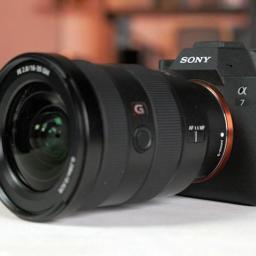 |
by Ian Carlos Campbell on (#71RR4)
Sony appears to be ready to announce another addition to its Alpha camera lineup. The company shared an image on the Sony Alpha Instagram account with the text "Chase your dream" and the date December 2 at 9AM EST, which could be a teaser for its next mirrorless camera.It's possible the company has something else in mind, but the giant "V" or Roman numeral five in the background of the image seems like a clear reference to an unannounced Sony A7 V, a follow-up to the Sony Alpha 7 IV. Considering there was around a four year gap between the release of the A7 III and A7 IV, releasing the new camera in 2026 would make the timing lineup, too.
|
 |
by Kris Holt on (#71RP5)
Indie studio Santa Ragione said it is at risk of shutting down as its latest project won't be available on Steam, which is by far the biggest storefront for PC games and a key point of sale for many developers.Horses, a first-person horror game that blends gameplay and live-action sequences, is about a college student who spends a summer working on a farm. However, the farm's horses" are actually naked human adults who are wearing horse masks. It's clear from the trailer that this is a game for grownups.The studio plans to release Horses on the Epic Games Store, GOG, Itch and the Humble Store on December 2. However, Valve's content review team blocked Horses from Steam."We reviewed the game back in 2023. At that time, the developer indicated with their release date in Steamworks that they planned to release a few months later. Based on content in the store page, we told the developer we would need to review the build itself. This happens sometimes if content on the store page causes concern that the game itself might not fall within our guidelines," Valve told PC Gamer. After our team played through the build and reviewed the content, we gave the developer feedback about why we couldn't ship the game on Steam, consistent with our onboarding rules and guidelines. A short while later the developer asked us to reconsider the review, and our internal content review team discussed that extensively and communicated to the developer our final decision that we were not going to ship the game on Steam."Santa Ragione wrote in an FAQ that it's "committed to producing challenging, adult storytelling. Horses uses grotesque, subversive imagery to confront power, faith, and violence. We reject subjective obscenity standards and believe this kind of moralizing censorship evokes a darker past in which vague notions of 'decency' were used to silence artists. Games are an artistic medium and lawful works for adults should remain accessible. We respect players enough to present the game as intended and to let adults choose what to play; lawful works should not be made unreachable by a monopolistic storefront's opaque decisions."This particular ban precedes the recent censorship of adult-oriented games at the behest of payment processors. Santa Ragione wanted to create a Steam store page for Horses back in 2023 to help build interest. The studio says Valve wanted to see a playable build of the game before it would approve a Coming Soon page. The game was nowhere close to being finished, so Santa Ragione scrambled to put together a playable version of the game with tons of placeholders."According to an email from Valve that the developer shared, it banned Horses from the storefront over "content that appears, in our judgment, to depict sexual conduct involving a minor." Santa Ragione said Valve didn't provide more detailed reasons for rejecting the game. Valve noted that it wouldn't accept further submissions of Horses, "even with modifications."The developer claimed that it spent the next two years trying to change Valve's mind, but the company repeatedly pointed it to Steam's general guidelines and rejected its requests for review and appeal." Santa Ragione does have a plausible theory as to why Valve blocked the game from Steam, however.The studio wrote in the FAQ that:
|
 |
by Danica Creahan,Liz Kocan on (#71RKF)
This Thursday is serving up heaps of turkey, potatoes, and professional football. The NFL has three games on the schedule, all conveniently timed so you'll be able to have football on pretty much from midday until bedtime. For the first game of the day, you can catch the AFC North battle between the Green Bay Packers and the Detroit Lions at 1 p.m. ET, followed by the Kansas City Chiefs vs. Dallas Cowboys at 4:30 p.m. ET. For the evening game, the Cincinnati Bengals visit the Baltimore Ravens, kickoff is at 8:20 p.m. ET. (And don't forget about the Black Friday game between the Chicago Bears and the Philadelphia Eagles, too). Each of these games will be broadcast by different providers, so take note of where you can watch below, and prepare to commandeer the remote control for the day. Here's everything you need to know about how to watch this week's Thanksgiving Day games on every channel and platform. How to watch 2025 Thanksgiving football: Date: Thursday, Nov. 27 Time: 1 p.m., 4 p.m, 8:20 p.m. ET TV channels: NBC, CBS, FOX Streaming: DirecTV, Peacock, Paramount+ Premium, ESPN+ and more Which teams are playing football this Thanksgiving? The NFL Thanksgiving slate will feature three games on Thursday (and a Black Friday game this Friday). First, the Green Bay Packers play the Detroit Lions at 1 p.m. ET on FOX. Later, the Kansas City Chiefs take on the Dallas Cowboys at 4:30 p.m. ET on CBS, and streaming live on Paramount+. Finally, the Cincinnati Bengals will face the Baltimore Ravens at 8:20 p.m. ET on NBC and streaming live on Peacock. On Black Friday, the Chicago Bears play the Philadelphia Eagles at 3 p.m. ET, streaming exclusively on Amazon Prime Video. Here's the full Week 13 NFL schedule, plus how to watch every game: NFL Week 13 TV/streaming schedule: All times Eastern. Thursday, November 27, 2025
|
 |
by Andre Revilla on (#71RKG)
Have you ever been roaming around collecting bananas in Donkey Kong Country on the SNES and thought to yourself, "gee, I wish I could play this game on my shoe." Well designer Gustavo Bonzanini set out to make this dream a reality. To celebrate the 35th anniversary of Super Nintendo's launch in Japan, Bonzanini has created the AIR SNES, a throwback custom pair of Nike Air Max 90 sneakers that doubles as a completely functional SNES console."The idea came after looking at collaborations between sneaker brands and video games. I always asked myself: wouldn't it be cool if these shoes that look like a video game actually double as a console?" Bonzanini said in a press release shared with Engadget.The shoe was created using a Raspberry Pi Zero W running the RetroPie emulator, which Bonzanini customized to fit inside the sneaker's tongue. The shoe has battery capacity for up to 30 minutes of gameplay and sports an integrated HDMI port.For those with nostalgia for old-school display connectors, the shoe also has a small analog converter for RCA connectors. As for controllers, the shoe is compatible with an original SNES gamepad, but you can also use an 8BitDo Mod Kit that connects to the Raspberry Pi wirelessly over Bluetooth.This art project was my way of celebrating both and pushing the idea of what sneaker culture and tech can become when they merge," said Bonzanini. Unfortunately for all of us that would pick up a pair of these in a heartbeat, the AIR SNES is just a one-time creation to celebrate 35 years of one of the greatest consoles ever made.This article originally appeared on Engadget at https://www.engadget.com/gaming/nintendo/a-designer-in-singapore-created-a-functional-snes-inside-a-wearable-nike-sneaker-192907456.html?src=rss
|
 |
by Will Shanklin on (#71RKH)
With the gaming industry's recent rash of layoffs, closures and cancellations, it would be easy to assume Beyond Good and Evil 2 is toast. After all, the game looked like vaporware even before the extreme cost-cutting trend started. But here we are in late 2025, and - lo and behold - Ubisoft is hiring for the prequel.The job listing (via Eurogamer) is for a technical sound engineer. But aside from revealing that the game is apparently still in the works, the description doesn't tell us anything new. "Beyond Good & Evil 2 is an action-adventure open world game set in a captivating space opera universe and the direct prequel to the 2003 cult classic," the posting reads. "Based on a breakthrough technology driven by the proprietary Voyager engine, Beyond Good & Evil 2 aims to offer a seamless experience of exploration and space piracy across a solar system full of exotic locations, colorful characters and mysteries to uncover, solo or with friends."Ubisoft first teased the prequel in 2008, then officially announced it in 2017. Engadget even watched a closed-door gameplay presentation the following year. We described what we saw as "wildly ambitious," perhaps to a concerning degree, given the technical challenges tied to that scope. Those worries appear to have been warranted, as we still hang onto tiny nuggets of hope (look, a job posting!!) over seven years later.In 2022, Bloomberg poured more cold water on its timeline, reporting that the game was still in pre-production. Engadget contacted Ubisoft for comment on its current status, and we'll update this story if we hear back. In the meantime, you can revisit the surge of hope that was the game's 2018 cinematic trailer.This article originally appeared on Engadget at https://www.engadget.com/gaming/beyond-good--evil-2-is-somehow-still-under-development-185230052.html?src=rss
|
 |
by Kris Holt on (#71RGX)
Sony has revealed the final batch of PlayStation Plus Monthly Games for 2025. This time around, you'll be able to add five games to your library instead of the usual three. As ever, you'll retain access to claimed games as long as your subscription remains active.The headliner this time around is Lego Horizon Adventures (PS5), which is a more family-friendly take on the Horizon series. Guerrilla Games and Studio Gobo gave the events of Horizon Zero Dawn a Lego flavor in this spinoff, which is the first co-op game in the series (an MMO is in the pipeline too). I've been meaning to check this out, so it'll be an easy addition to my library.The same goes for Neon White (PS4 and PS5), a fast-paced precision platformer and first-person shooter that's also part-dating sim. Each level is a race to the exit but you'll need to defeat every demon in the stage first.There are a couple of first-person co-op horror games in the December lineup. Those are the action-focused title Killing Floor 3 (PS5) and the psychological survival horror The Outlast Trials (PS4 and PS5). The final entry in the Monthly Games lineup this time around is extraction shooter Synduality Echo of Ada (PS5). That could help you scratch an Arc Raiders-shaped itch if you don't fancy shelling out for that particular game right now.All five games will be available for PS Plus Essential, Extra and Premium members to snag on December 2 and they'll remain up for grabs until January 5. You still have until December 1 to scoop up November's PS Plus Monthly Games, which are EA Sports WRC 24, Totally Accurate Battle Simulator and the wonderful Stray.At the beginning of this year, Sony said it planned to stop offering PS4 games as a key benefit" on the PS Plus Monthly Games and Game Catalog lineups as of January 2026. While it might add PS4 games from time to time, the onus for PS Plus going forward will be on PS5 (and perhaps some PS VR2) games. Of course, any PS4 Monthly Games that you've claimed will still remain available for download as long as your PS Plus subscription remains active.This article originally appeared on Engadget at https://www.engadget.com/gaming/playstation/decembers-ps-plus-monthly-games-include-lego-horizon-adventures-and-neon-white-174500131.html?src=rss
|
 |
by Lawrence Bonk on (#71RGY)
EU member states have agreed on a position regarding online child protection legislation that doesn't force global tech companies to identify and remove child sexual abuse materials (CSAM.) This is being seen as a major victory for US tech companies like Google and Meta, according to reporting by Reuters.This new European Council language contradicts a 2023 position in which the European Parliament would have required messaging services, app stores and ISPs to report and remove CSAM materials and instances of grooming. The proposed legislation doesn't have any of that.Instead, it tasks major tech companies with assessing the risk of their services, taking preventative measures as deemed necessary. It leaves enforcement up to individual national governments and not the EU governing body."Member states will designate national authorities ... responsible for assessing these risk assessments and mitigating measures, with the possibility of obliging providers to carry out mitigating measures," the European Council wrote in a statement. "In the event of non-compliance, providers could be subject to penalty payments."There's no language here regarding the enforced scanning of encrypted materials for CSAM, which was an idea being discussed as recently as last year. However, there is some language that suggests encryption services must be safeguarded. Some detractors, like the Czech Republic, suggest that the Council's idea to allow tech entities to essentially self-police content could actually hurt encryption platforms.This is "a great disappointment for everyone who cares about privacy," Czech politician Marketa Gregorova wrote in a statement. "The Danish presidency has pushed through a compromise version of the proposal after long negotiations, which, while appearing to be less invasive, actually paves the way for what we have long warned against: the blanket scanning of our private conversations."The proposed law does, however, establish something called the EU Center on Child Sexual Abuse. This organization would have a mandate to help countries comply and provide assistance for victims. The European Parliament also recently called on the EU to set minimum ages for kids to access social media, but there's no current law in the works.All of this isn't a done deal just yet. The Council now must enter into negotiations with the Parliament.This article originally appeared on Engadget at https://www.engadget.com/big-tech/eu-backs-away-from-requiring-tech-companies-to-scan-and-remove-csam-173133351.html?src=rss
|
 |
by Lawrence Bonk on (#71FM7)
The GoPro Hero 13 Black action camera is down to $310 as part of an early Black Friday sale, which is a record low price. That's a discount of 23 percent or $90. This model topped our list of the best action cameras, and for good reason. It's a fantastic device with all kinds of bells and whistles. It's the most versatile Hero camera that GoPro has ever made. There's a new family of modular lenses and it can shoot up to 5.3K and handle 2X optical zoom. The battery is bigger than ever before and offers around 90 minutes of continuous shooting in 4K/30FPS. The camera is waterproof up to 10 millimeters, so don't worry about puddles. The full-color front screen is vivid and makes it easy to review footage without getting a computer involved. There's no internal storage here, but it accepts microSD cards. There's a camera bundle on sale right now that includes a 64GB microSD, three batteries, a dual charger and a case. That pack costs $349, which is a discount of 30 percent. This article originally appeared on Engadget at https://www.engadget.com/deals/get-our-favorite-action-camera-for-an-all-time-low-price-for-black-friday-160154667.html?src=rss
|
 |
by Lawrence Bonk on (#71KT4)
If you've been thinking about jumping on the smart glasses bandwagon, Black Friday deals could help you do so for less. Xreal has discounted its One Pro smart glasses by $50 for Black Friday, bringing them down to $599. The sale applies to both sizes. These glasses are the real deal. We praised them in our official review, saying they offer similar functionality to the Apple Vision Pro, but at a much friendlier price point. Wearing these glasses allows access to a massive 222-inch virtual display that can be used for just about anything. The glasses connect to laptops, gaming consoles and smartphones, among other gadgets. The 1080p Micro-OLED screens are surprisingly bright and sharp, which makes this device great for both work and consuming content. The frames even darken to give the illusion of wearing sunglasses. The glasses are light and comfortable, especially when compared to the Vision Pro. However, the comfort does come at a price. These oversized glasses are not as immersive as Apple's product, because they don't completely block out light and cover the entire face. They offer a 57-degree field of view. This is squarely an augmented reality product and not a virtual reality product. The company has also discounted its Xreal One AR glasses to $399, which is a discount of around $100. These offer smaller virtual screens than the Pro, with a 50-degree field of view. Elsewhere in the smart glasses space, the Meta Ray Ban Gen 1 glasses are 20 percent off for Black Friday as well. This article originally appeared on Engadget at https://www.engadget.com/deals/black-friday-deals-include-the-xreal-one-pro-smart-glasses-for-a-record-low-price-113032857.html?src=rss
|
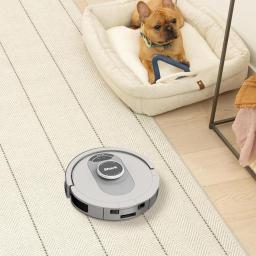 |
by Will Shanklin on (#71KR6)
It's a good time to pick up a robot vacuum on sale for Black Friday. Shark machines are some of our favorites, and we're seeing a number of models discounted for Black Friday. But this one, the Shark AI Ultra robot vacuum, is probably the best deal for most people this year. It's 58 percent off and down to an all-time low of $250. One of this model's standout features is its bagless design. Like many robovacs, it has an auto-empty station. But here, you can remove part of the base, dump its contents in the garbage, and lock it back in place. The base holds up to 60 days of dirt and debris, and you'll never need to order bag refills. The Shark AI Ultra has strong suction and decent obstacle avoidance (via LiDAR). The robovac cleans in a matrix grid. It auto-maps your home and supports Google Assistant and Alexa for voice control. The vacuum has a runtime of about 120 minutes. (If it needs to stop and charge, it will auto-resume afterward.) Also note that this is a vacuum-only model: no mopping here. But Shark has other Black Friday deals if you're interested in a robovac that also mops, or even a cordless stick vacuum instead. The Shark Stratos 2-in-1 robot vacuum and mop is 55 percent off and down to $450 right now, while the Power Detect Pet Plus cordless vacuum with self-emptying base is down to $400. This article originally appeared on Engadget at https://www.engadget.com/deals/get-58-percent-off-one-of-our-favorite-shark-robot-vacuums-this-black-friday-100013956.html?src=rss
|